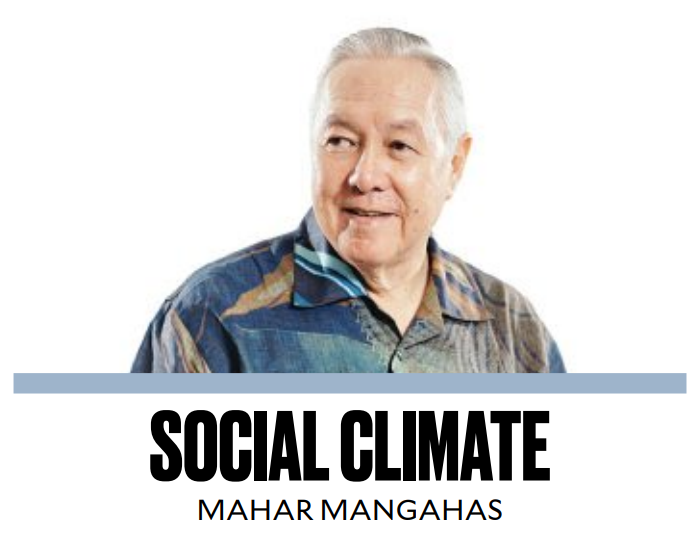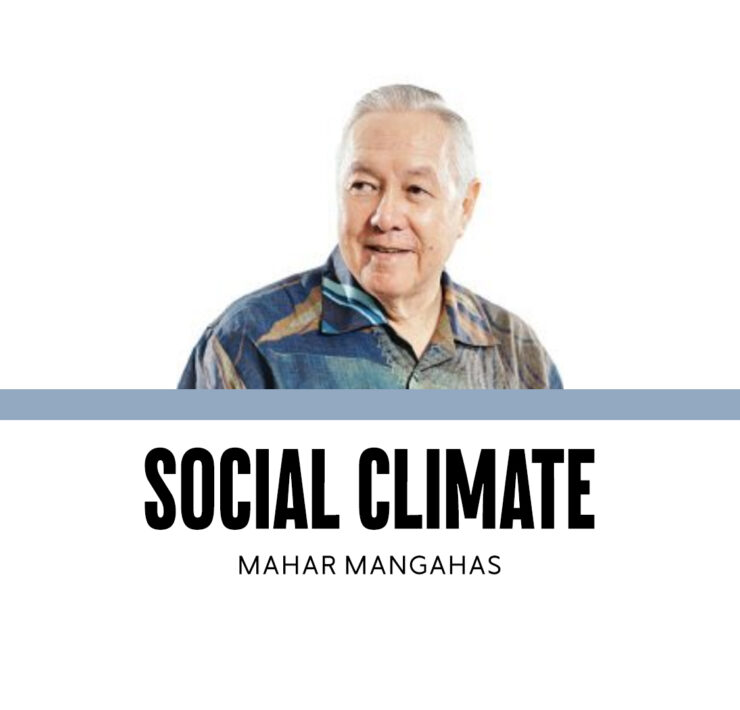A post-pandemic re-start?

This week, Social Weather Stations (SWS) winds up reporting from its 2023Q3 survey—“Third Quarter 2023 Social Weather Survey: Joblessness falls to 16.9% in September 2023 from 22.8% in June 2023,” www.sws.org.ph, 12/21/2023—and begins reporting on its 2023Q4 survey—“Fourth Quarter 2023 Social Weather Survey: 73% of adult Filipinos expect a happy Christmas, the same as 2022,” www.sws.org.ph, 12/23/2023. The Third Quarter round was done from Sept. 28 to Oct. 1; the Fourth Quarter round was done on Dec. 8-11.I capitalize the SWS term Joblessness to distinguish it from the official term Unemployment, which means not working for pay for even one hour in the week prior to interview. Being officially Unemployed, as defined by the Philippine Statistical Authority (PSA) essentially means being idle for a whole week, and, in addition, looking for work.
In an SWS survey, being Jobless has no reference to time working; it is simply walang trabaho. Whatever the survey respondent considers trabaho, and, in addition, looking for trabaho. It is comparable to PSA Unemployment plus PSA Underemployment, after the latter is computed as a proportion of the Labor Force rather than as a proportion of the Employed; the SWS report has a chart that compares Joblessness to PSA Unemployment + Underemployment over time.
The six-point fall in the national Joblessness rate over the preceding quarter is double the sampling error margin and hence is very significant. It is the proportion of adults with no job when interviewed, who are also looking for a job. It brings the average for 2023Q1 to 2023Q3 to 19.6 percent; that is a full recovery from the pre-pandemic 2019 average of 19.8 percent. The annual averages in the pandemic years were: 37.4 in 2020, 25.7 in 2021, and 21.7 in 2022. The all-time peak Joblessness was a catastrophic 45.5 percent in July 2020.
In previous columns this year, I have pointed out that the 2023 SWS statistics on poverty, hunger, gainers/losers, and optimists/pessimists are already close to pre-pandemic levels. I think the people’s economic well-being has just about caught up with where it was before COVID-19 struck.
As of September, the adult Joblessness rate was highest in Balance Luzon, at 21 percent, which is an exact recovery from its 2019 average of 21 percent. The next highest in September was 19 percent in the National Capital Region (NCR), an improvement from its average of 21 in 2019. Joblessness in September was lowest in Visayas and Mindanao, both at 12 percent; both are now doing better than their 2019 averages of 16 and 19 respectively.
The geographical pattern of Joblessness was the same in September as in June, due to falls across the entire country. The six-point fall in the national rate is the average of falls by nine points in Balance Luzon, by five points in NCR, and by four points in both Visayas and Mindanao.
The job-disadvantage of women has notably decreased. In September 2023, Joblessness was 21 percent among women versus 14 percent among men. This is an improvement from June 2023 when Joblessness was 27 percent for women versus 20 percent for men, with the sex gap unchanged at seven points.
Furthermore, the sex disadvantage is much less now than in pre-pandemic 2019 when Joblessness averaged 30 percent for women versus 12 percent for men.
The job-disadvantage of youth has also decreased. As of last September, the Jobless percentages are now 34 in age-group 18-24, 23 in age-group 25-34, 17 in ages 35-44, and 12 in ages 45 and up. These are all improvements from June 2023.
Moreover, the Jobless percentages by age were all better in September than in pre-pandemic 2019 when they averaged 43 in ages 18-24, 27 in ages 25-34, 16 in ages 35-44, and 13 in ages 45 and up.
It would appear that job opportunities for women, relative to men, and for youth, relative to the more mature, are better now than before the pandemic. This is a very interesting discovery that deserves further study.
Economic deprivation seems directly related to joblessness. The September report shows that, in the last four quarters, families of the jobless consistently suffer more from hunger than families of those with jobs. Probably a similar connection exists between Self-Rated Poverty and Joblessness; it should be verified. Assuming there is such a connection, has it changed from before the pandemic?
Expectations of a Happy Christmas are returning to their pre-pandemic dominance. Since 2002, the final quarterly SWS survey of the year has typically asked its respondents if they expect the coming Christmas to be Happy, Sad, or neither happy nor sad (using masaya for happy and malungkot for sad).
The peak 82 percent proportion that expected to be Happy was found in 2002 and has not reached the 80s since then. It fell to 77 in 2003, and then hovered in the 60s from 2004 to 2013. It was in the 70s again starting 2014, and rose steadily to 79 in 2019 (though somehow we forgot this item in 2018). Then it collapsed to 50 in pandemic year 2020. It was back at 65 in 2021, recovered to 73 in 2022, and is at 73 again this month, which looks healthy enough to me.
Merry Christmas to All!—————–Contact: mahar.mangahas@sws.org.ph.
Dr Mahar Mangahas is a multi-awarded scholar for his pioneering work in public opinion research in the Philippines and in South East Asia. He founded the now familiar entity, “Social Weather Stations” (SWS) which has been doing public opinion research since 1985 and which has become increasingly influential, nay indispensable, in the conduct of Philippine political life and policy. SWS has been serving the country and policymakers as an independent and timely source of pertinent and credible data on Philippine economic, social and political landscape.
















